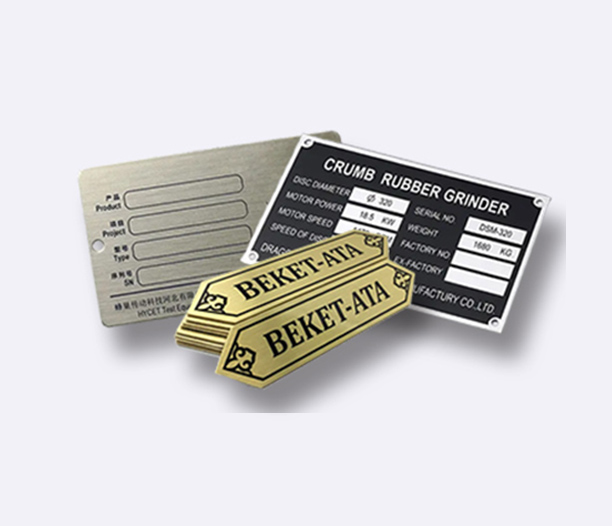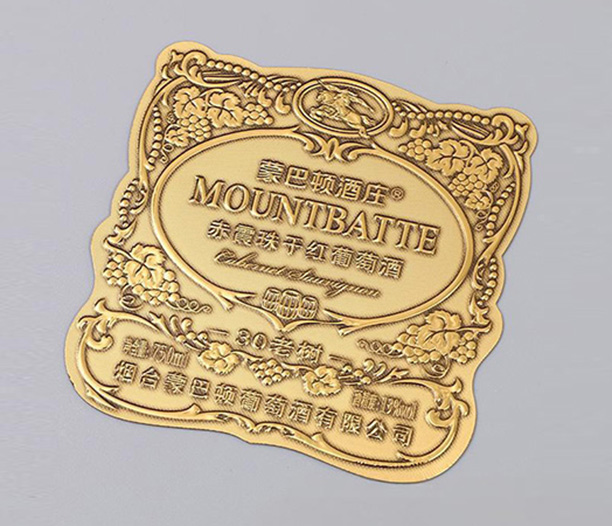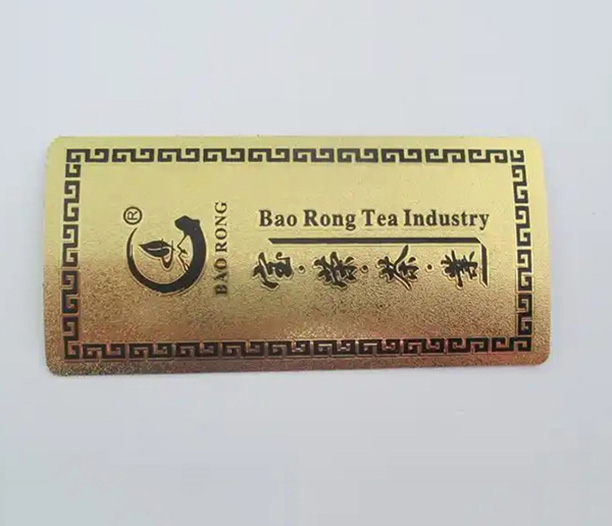In a world increasingly dominated by digital interactions and fleeting messages, there remains a profound appreciation for objects of tangible permanence and personal touch. Among these, small engraved name plates stand out as timeless artifacts. They are more than mere identifiers; they are markers of identity, ownership, and prestige. Found on office doors, desks, awards, and cherished gifts, these meticulously crafted items speak volumes through their understated presence. This article delves deep into the world of small engraved name plates, exploring their various facets and addressing the common questions surrounding them.
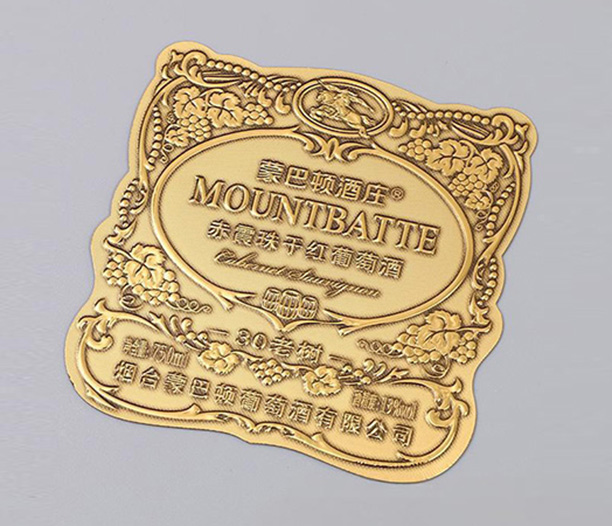
The Enduring Appeal and Versatile Applications of Small Engraved Name Plates
Why do we continue to use small engraved name plates in the 21st century? Their appeal lies in their unique combination of functionality and elegance. Unlike printed labels, engraving involves physically etching the design into the material, creating a permanent and tactile record that withstands the test of time. These plates serve a multitude of purposes across different environments. In corporate settings, they lend an air of professionalism and formality, clearly designating ownership of an office, desk, or piece of equipment. In personal spaces, they add a touch of class to home offices, libraries, or even to identify rooms in a house. Furthermore, they are a popular choice for trophies, awards, and retirement gifts, transforming a simple object into a personalized keepsake. The versatility of small engraved name plates is truly remarkable.
A Look at Common Materials and Engraving Techniques
The quality and appearance of a small engraved name plate are largely determined by the material used and the method of engraving employed. Understanding these options is key to making an informed choice.
Popular Materials:
Metals: Brass, bronze, stainless steel, and aluminum are classic choices. Brass and bronze offer a traditional, luxurious look, often enhanced with antique finishes or polished surfaces. Stainless steel provides a modern, sleek, and highly durable option, resistant to corrosion. Aluminum is a lighter, cost-effective alternative that still offers a professional appearance.
Plastics/Acrylics: High-quality plastics like acrylic or polystyrene are versatile and affordable. They can be manufactured in a vast array of colors and finishes, including translucent and opaque variants, allowing for more creative and modern designs.
Wood: For a rustic, warm, or eco-friendly aesthetic, wooden name plates are an excellent choice. Engraving on dark wood with a light inlay, or on light wood with a dark stain-filled engraving, creates a striking contrast.
Engraving Techniques:
Laser Engraving: This is a highly precise, computer-controlled method where a laser beam vaporizes the material's surface to create the design. It is perfect for complex logos, intricate fonts, and serial numbers. It works exceptionally well on metals, plastics, and wood, offering a clean and permanent mark.
Diamond Drag Engraving: This technique uses a hardened diamond tip to scratch the surface of the material. It is primarily used for metals and creates a fine, silvery line on the surface. It is a mechanical process ideal for text and simpler designs.
Rotary Engraving: This method uses a rotating cutting tool to physically carve out the material. It creates a deeper, more pronounced groove than diamond drag engraving. It is often used for plastic and metal plates where depth is desired for aesthetic reasons or for filling with colored enamel.
Design Considerations for a Lasting Impression
Designing your small engraved name plate is where functionality meets personal expression. Several elements must be considered to ensure the final product is both legible and visually appealing.
Font Selection: The choice of typeface is critical. Ornate, script fonts may look beautiful but can be difficult to read from a distance, especially on a small plate. Sans-serif fonts like Arial, Helvetica, or Verdana are often preferred for their clarity and modern feel. Serif fonts like Times New Roman can convey a more traditional, formal authority.
Layout and Sizing: The text must be proportionate to the size of the plate. Crowding too much information onto a small surface will make it illegible. Essential information typically includes the name, and optionally, a title, department, or company name. Balancing white space with text is key to a professional look.
Graphics and Logos: Many companies choose to include a corporate logo on their name plates. Laser engraving excels at reproducing detailed logos with high accuracy. Ensure you have a high-resolution vector file of your logo for the best results.
Finish and Mounting: Consider the finish of the plate itself—brushed, polished, matte, or colored. Also, think about how it will be attached. Common mounting options include double-sided adhesive tape, screws, or standing on a desk with a weighted base.
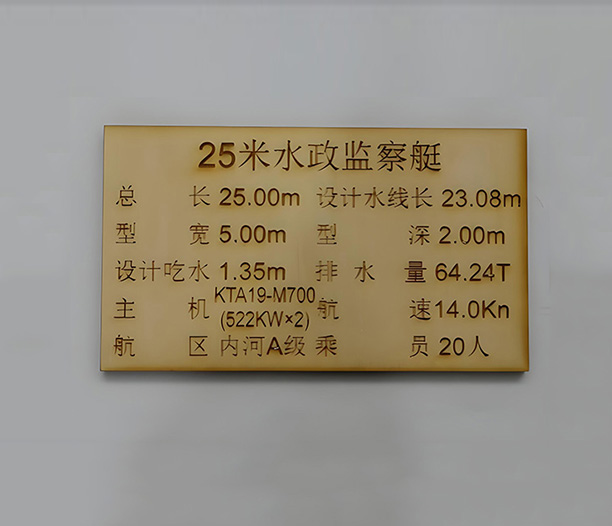
The Customization Process: From Concept to Creation
Ordering custom small engraved name plates is typically a straightforward process, but knowing what to expect can make it even smoother. Most suppliers follow a similar path. It begins with a quote request, where you specify the material, size, quantity, and any desired artwork. Reputable suppliers will then provide a digital proof for your approval. This proof is your opportunity to check for any spelling errors, confirm the layout, and ensure the design meets your expectations. Once approved, the production process begins. For laser engraving, a digital file guides the machine to create precise and consistent results, especially important for bulk orders. After engraving, the plates may undergo finishing processes like cleaning, applying a protective coating, or adding a mounting mechanism before being carefully packaged and shipped.
Caring for Your Engraved Name Plates
To ensure your small engraved name plates retain their beauty and legibility for years to come, proper care is essential. The good news is that maintenance is generally minimal. For metal plates, a soft, damp cloth is usually sufficient to wipe away dust and fingerprints. For more stubborn grime on metals, a mild soap solution can be used, but abrasive cleaners should always be avoided as they can scratch the surface and damage the finish. Plastic and acrylic name plates can be cleaned similarly but are more susceptible to scratching, so a gentle touch is important. Wooden plates should be dusted dry and can occasionally be treated with a furniture polish suitable for that specific wood type. The engraved grooves themselves can collect dust over time; this can be gently cleaned out with a soft-bristled brush, like a clean paintbrush or toothbrush.
Frequently Asked Questions About Small Engraved Name Plates
Q1: How durable is the engraving on these name plates?
The engraving is extremely durable. Because the design is physically etched into the material, it cannot peel, fade, or rub off like printed or labeled text. It is resistant to sunlight, cleaning, and general wear and tear, making it a permanent feature of the plate.
Q2: What is the typical turnaround time for an order?
Turnaround time varies depending on the supplier and the complexity of the order. For standard materials and designs, production can often be completed within 3-5 business days after proof approval, plus shipping time. Larger, more complex custom orders may take longer.
Q3: Is there a minimum order quantity?
This depends on the manufacturer. Many are willing to produce even a single small engraved name plate, though unit prices may be higher. Volume discounts are commonly available for larger orders, making them cost-effective for outfitting an entire office.
Q4: Can you provide a sample before I place a large order?
Most reputable suppliers will be happy to provide a physical sample upon request, though there may be a nominal fee to cover material and shipping costs. This is highly recommended for large orders to confirm material quality, color accuracy, and the overall look and feel.
Q5: What file format is best for submitting a logo?
Vector files (such as .AI, .EPS, .SVG, or .PDF) are ideal because they allow for scaling to any size without loss of quality. If a vector file is unavailable, a high-resolution (300 DPI or higher) raster image (.PNG or .JPG) can often be used, though extremely fine details may be lost.
In conclusion, small engraved name plates are a subtle yet powerful tool for organization, identification, and commemoration. Their blend of durability, elegance, and customizability ensures they remain a relevant and valued accessory in both professional and personal spheres. By understanding the materials, processes, and design choices available, you can select the perfect plates to meet your needs and make a lasting impression.



